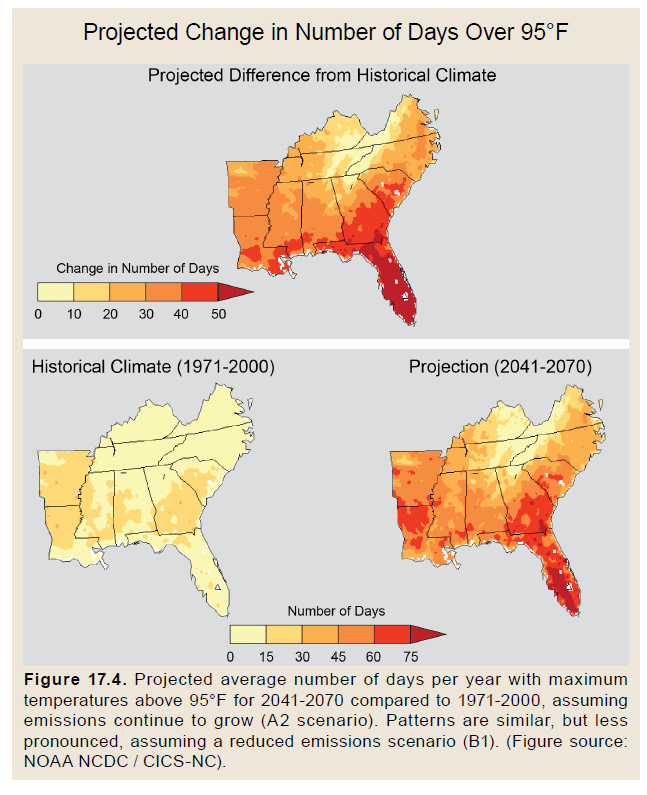- Changes in Temperature
Changes in Temperature in Florida

Based on available emission scenarios and the ensemble of climatic circulation models, annual average temperatures across the state are projected to markedly increase toward the end of the century. All areas of Florida are expected to see increases in temperature by the 2080s.
On average across the state, average annual temperatures are expected to increase by more than 6.5°F by the end of the 21st century.
Warmer Average Temperatures
The degree of change in temperature will vary across the state. Average annual temperatures are expected to increase more in north Florida (more change) than in south Florida.
| Panhandle | North Peninsula | Central | South | |
|---|---|---|---|---|
| 2050 annual | +3.5°F | +3.4°F | +3.1°F | +2.9°F |
| 2080 annual | +5.2°F | +5.0°F | +4.7°F | +4.3°F |
Hotter Summers
The difference in temperature compared to historical averages is expected to be greater in the summer and fall than winter for all regions of the state.
| Panhandle | North Peninsula | Central | South | |
|---|---|---|---|---|
| 2050 summer | +4°F | +3.7°F | +3.5°F | +3.1°F |
| 2080 summer | +5.8°F | +5.5°F | +5.1°F | +4.6°F |
Changes such as the number of extremely hot days or fewer days with below freezing temperatures are likely to be more important than average temperature changes and will cause impacts to species and habitats.
More Hot Days
By mid- to late-century most of Florida will experience an increase of more than 40 additional days with temperatures over 95˚F.

Fewer Cold Days
By mid- to late-century the Florida panhandle and northern peninsula will experience a decrease in the number of days with minimum temperatures below 32˚F under a high emission scenario. This could lead to a northward of expansion of both native and exotic species of plants and animals.